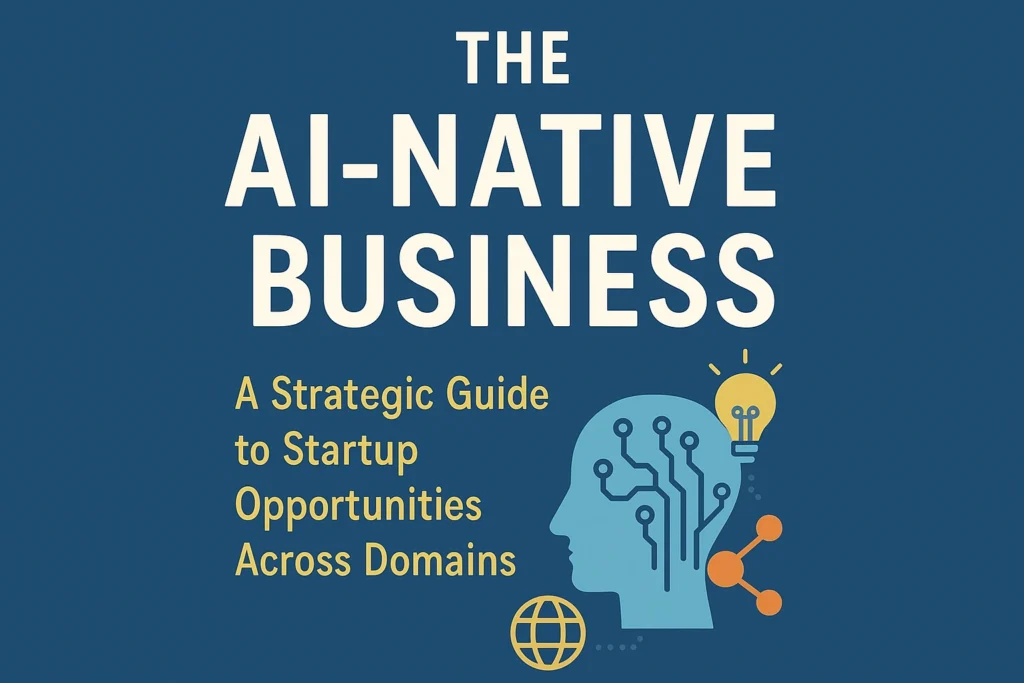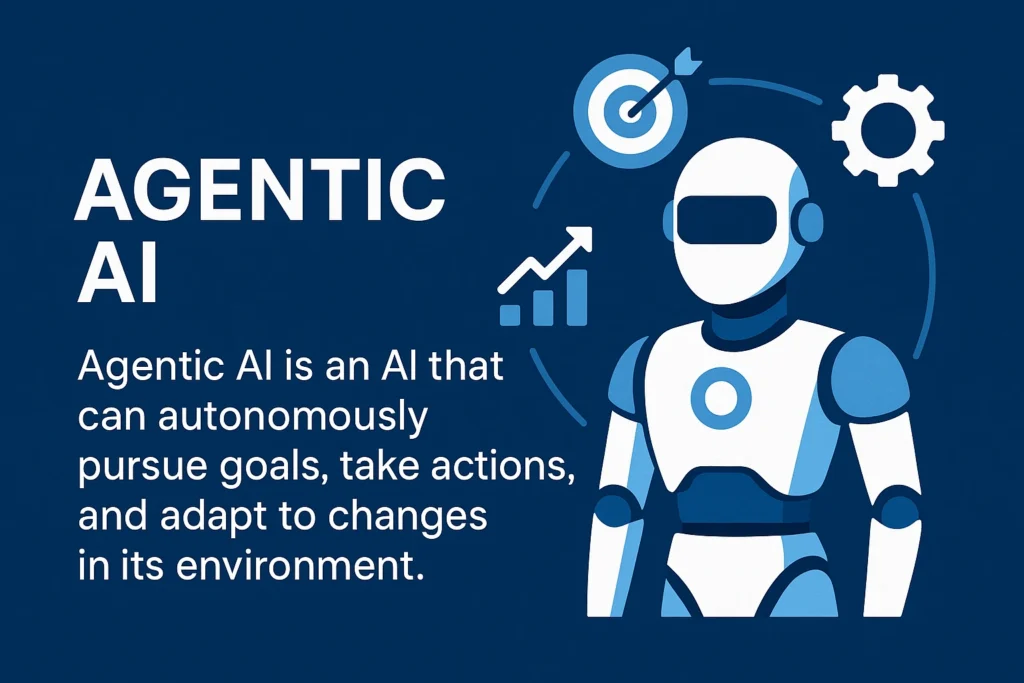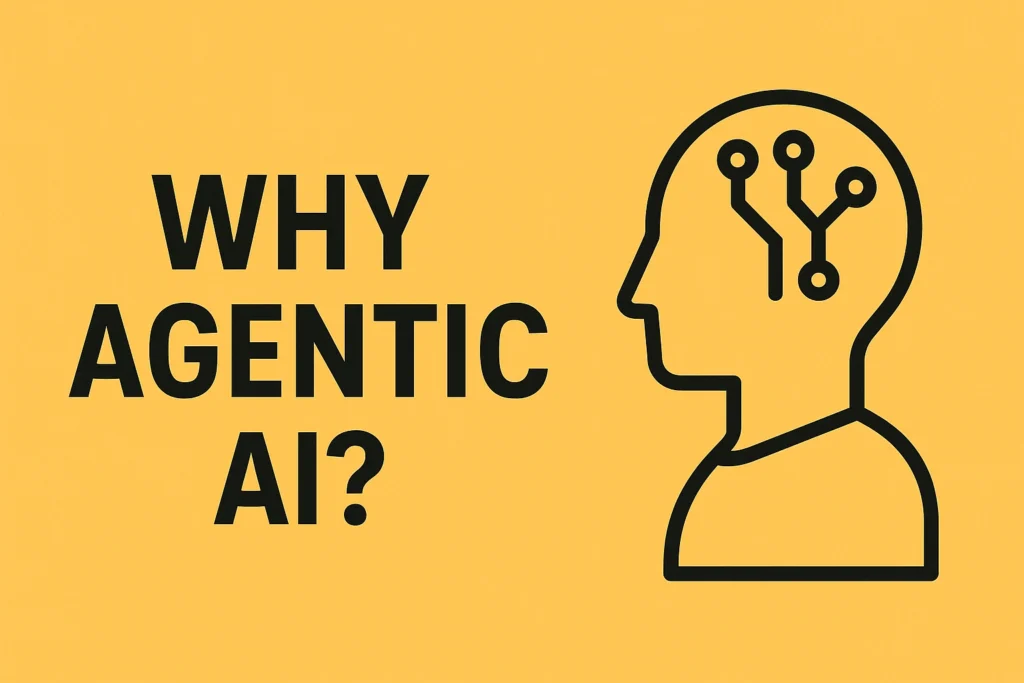Table of Contents
ToggleThe AI-Native Business: A Strategic Guide to Startup Opportunities Across Domains

The AI-Native Business
A Strategic Guide to Startup Opportunities Across Domains
Understand where Artificial Intelligence creates transformational business opportunities, not just optimizations.
From "Using AI" to "Being AI-Native"
The core shift in the AI landscape is moving beyond simply adopting AI tools to building entire businesses where AI is the fundamental value proposition. This section clarifies this distinction and sets the stage for identifying truly AI-native opportunities.
Traditional Approach: Using AI
AI is applied to optimize existing processes, making them faster or more efficient. The business could still function without AI, albeit less effectively.
- Focus: Process Optimization
- Value: Incremental Gains
- Dependency: AI is a tool
AI-Native Approach: Being AI-Native
The entire value proposition is built around a proprietary data loop and an AI model that unlocks entirely new capabilities, impossible without AI.
- Focus: New Capabilities & Value Creation
- Value: Transformational Impact
- Dependency: AI is core to existence
AI-Native Opportunities Across Key Domains
Explore how Artificial Intelligence is fundamentally reshaping industries, creating unique strategic advantages for startups that build their core value around AI.
Healthcare: High-Stakes, High-Barrier
Strategic Insight: AI enables diagnostics that are superhuman, detecting conditions far earlier than traditional methods. This is a new paradigm of preventative medicine.
- Focus: Single, high-impact problem (e.g., early diabetic retinopathy detection).
- Moat: Proprietary, annotated datasets + regulatory approval (FDA, CE).
- Business Model: B2B SaaS for hospitals, pharma; licensing AI models.
This chart illustrates the potential impact score of AI across various healthcare applications, highlighting areas with the highest transformative potential.
Finance: Speed, Security & Alpha
Strategic Insight: AI processes disparate data faster and more accurately than humans, enabling both **defensive** (fraud prevention) and **offensive** (alpha generation) strategies.
- Focus: Real-time fraud detection, niche algorithmic trading, robo-advisors.
- Moat: High-speed data pipelines + real-time model retraining.
- Business Model: B2B SaaS, priced on transaction volume or AUM.
This chart breaks down the estimated value contribution of AI in different financial applications, emphasizing areas of significant impact.
Retail & E-commerce: Hyper-Personalization Arena
Strategic Insight: AI enables **predicting customer wants** before they know it, creating a "segment of one" for hyper-personalized experiences.
- Focus: Hyper-personalization engines, supply chain AI, new interfaces (visual search).
- Moat: Real-time feedback loop with user behavior data.
- Business Model: Freemium/subscription (B2C), tiered SaaS (B2B).
This chart highlights the key areas where AI-driven personalization delivers the most significant benefits in retail and e-commerce.
Manufacturing & Industry 4.0: The Efficiency Frontier
Strategic Insight: AI transforms maintenance from reactive to proactive, enabling **predictive maintenance** and creating an intelligent, self-aware factory.
- Focus: Predictive maintenance, automated quality control, digital twins.
- Moat: Domain-specific sensor data + machine learning failure models.
- Business Model: B2B SaaS per machine/line; Predictive Maintenance-as-a-Service.
This chart illustrates the potential reduction in equipment downtime through the implementation of AI-powered predictive maintenance solutions.
Creative Industries: The Generative Revolution
Strategic Insight: Generative AI doesn't replace creativity; it **augments and scales it by orders of magnitude**, enabling new forms of expression and content production.
- Focus: Niche creator tools (e.g., specialized generative AI for architectural visualization, adaptive music for games).
- Moat: Superior user experience + workflow integration + fine-tuned models.
- Business Model: SaaS, API licensing, credit-based usage.
This chart showcases the diverse applications of Generative AI across various creative domains, highlighting its broad impact.
Your AI Startup Playbook: Core Principles for Success
Regardless of the domain, these four strategic principles are fundamental to building a defensible and transformative AI-native business.
1. Niche Problem
Find a specific, high-value, painful problem in a single vertical. Don't try to solve everything.
2. Proprietary Data Loop
Design your business to capture unique, relevant data that continuously improves your AI model, creating a compounding advantage.
3. Seamless Workflow
Build a product that integrates invisibly into the user's existing workflow, making their job exponentially easier.
4. Hybrid Expertise
Combine deep technical AI/ML knowledge with profound domain expertise. Hybrid teams win.
The AI-Native Advantage
The AI revolution is not about a single "killer app." It's about a thousand specialized, AI-native solutions transforming every facet of our economy.
- It’s not about adding AI.
- It’s about reimagining businesses through AI.
- Find your domain.
- Build your moat.
- Start AI-native.
Stay Updated to Learn & Earn
The AI-Native Business
A Strategic Guide to Startup Opportunities Across Domains
Understand where AI creates transformational business opportunities.
Introduction: From "Using AI" to "Being AI-Native"
The fundamental shift we're witnessing is not just about industries *adopting* AI; it's about the rise of AI-native companies. A traditional company uses AI to optimize an existing process. An AI-native company builds its entire value proposition around a proprietary data loop and an AI model that couldn't exist otherwise.
This distinction is crucial. As a startup expert, my advice is to avoid competing on optimizing legacy processes. Instead, find the opportunities where AI unlocks entirely new capabilities.
This guide dissects key domains through this lens, identifying where you can build a formidable, AI-native business.
- Traditional: Uses AI to optimize.
- AI-Native: Entire value prop is built on AI + proprietary data loop.
- Goal: Identify true AI-native opportunities.
Healthcare – High-Stakes, High-Barrier Domain
The healthcare sector is defined by massive datasets, critical outcomes, and a high barrier to entry due to regulation and the need for clinical validation. This is not a domain for casual experimentation; it's for deeply committed, expert-led ventures.
Strategic Insight: The core opportunity isn't just about making existing diagnostics *faster*; it's about enabling diagnostics that are superhuman. An AI that detects cancer from a medical scan 2 years before a human radiologist can is not an "optimization" — it's a new paradigm of preventative medicine.
- What AI is Used For: AI for superhuman diagnostics.
- How AI is Used: Deep learning on proprietary clinical datasets.
- Where AI is Used: Early cancer detection, diabetic retinopathy, drug discovery.
- Benefit: Saves lives, enables preventative medicine.
- Jobs/Business: Founders with PhDs or clinical + AI knowledge. B2B SaaS for hospitals, pharma.
Healthcare – AI-Native Playbook
This is your playbook for building an AI-native business in healthcare.
- Focus: Don't build a general "AI for Hospitals" platform. Focus laser-like on a single, high-impact problem. Your startup idea isn't "AI for medical imaging"; it's "A regulatory-approved deep learning model that detects early-stage diabetic retinopathy from retinal fundus images with 99% accuracy."
- Moat (Your Defensible Advantage): Your moat isn't just the algorithm. It's the proprietary, annotated dataset you build in partnership with hospitals and research institutions. It's the regulatory approval (e.g., FDA, CE) you secure, which is an incredibly high barrier for competitors.
- Business Model: This is a B2B play. Your customers are pharmaceutical companies (for drug discovery), hospital networks (for diagnostic tools), and MedTech device manufacturers. Revenue comes from licensing your validated AI model as a service (SaaS) or as a component within a medical device.
- Learning Path: Your learning path must be dual-tracked: master the fundamentals of deep learning for computer vision and NLP, but also immerse yourself in medical informatics, bioinformatics, and the landscape of clinical trials and FDA regulations. Without deep domain expertise, you cannot succeed.
Finance – Speed, Security, and Alpha Domain
The financial world operates on speed and trust. AI's role here is twofold: defensive (preventing massive losses from fraud and risk) and offensive (generating alpha, or market-beating returns).
Strategic Insight: The most valuable AI in finance is one that processes and connects disparate data points faster and more accurately than any human team. It's not just about analyzing stock charts; it's about correlating a CEO's sentiment in an earnings call (NLP), satellite imagery of factory output (Computer Vision), and real-time transaction flows (Anomaly Detection) to make a predictive trading decision.
- What AI is Used For: Real-time fraud detection, predictive trading, robo-advisors.
- How AI is Used: NLP, anomaly detection, multi-modal data integration.
- Where AI is Used: Asset management, payments, compliance.
- Benefit: Reduced losses, increased returns.
- Jobs/Business: Quant founders, B2B SaaS models, fintech startups.
Finance – AI-Native Playbook
This is your playbook for building an AI-native business in finance.
- Focus:
- Defense (High-Value Cost Center): Real-time, cross-platform fraud detection.
- Offense (High-Value Revenue Center): Niche-specific algorithmic trading.
- Democratization: AI-powered "Robo-Advisors" for mass market.
- Moat: Your proprietary models are key, but the true moat is the speed and quality of your data pipeline and your ability to continuously retrain and adapt your models in real-time. For RegTech (Regulatory Technology), the moat is embedding complex, ever-changing compliance rules into an automated AI system.
- Business Model: Primarily B2B SaaS for financial institutions. Pricing can be based on transaction volume (for fraud detection) or a percentage of assets under management (for robo-advisors).
- Learning Path: You need "quants" — individuals with a deep background in quantitative finance, statistics, and machine learning. The learning path involves mastering time series analysis, reinforcement learning for dynamic environments, and NLP for sentiment analysis. A strong understanding of market microstructures and financial regulations is non-negotiable.
Retail & E-commerce – Hyper-Personalization Arena
Retail is a battlefield for customer attention. The winner is the one who understands the customer best and can deliver the most relevant experience at the exact right moment. AI is the ultimate weapon in this fight.
Strategic Insight: The game has moved beyond simple "customers who bought X also bought Y." True AI-native retail is about predicting what a customer *will* want before they know it themselves. It's about using AI to create a "segment of one," where every interaction, recommendation, and promotion is uniquely tailored.
- What AI is Used For: Real-time personalized recommendations, visual search, virtual try-ons.
- How AI is Used: Behavior modeling, CV, predictive analytics.
- Where AI is Used: E-commerce platforms, DTC brands.
- Benefit: Increased conversion, customer loyalty.
- Jobs/Business: Data science-led startups, recommendation engines, UX tools.
Retail – AI-Native Playbook
This is your playbook for building an AI-native business in retail.
- Focus:
- Hyper-Personalization Engines: A platform that integrates seamlessly with existing e-commerce sites to deliver AI-powered recommendations, search results, and email marketing.
- Supply Chain & Inventory AI: A tool that reduces overstock by 15% and prevents stockouts of popular items provides immediate, massive ROI. Predictive demand forecasting is a huge opportunity.
- New Interfaces: AI-powered visual search and virtual try-on technologies create entirely new shopping experiences.
- Moat: A massive, clean dataset of user behavior is the core asset. The moat is the real-time feedback loop: the more users interact with your system, the smarter your recommendations become, the better the user experience, which attracts more users, generating more data. This is a powerful network effect.
- Business Model: For B2C-facing tools, it's often a freemium or subscription model. For B2B platforms (e.g., recommendation engines for other businesses), it's a tiered SaaS model based on traffic or number of SKUs.
- Learning Path: Focus on Data Science, Machine Learning, and Business Analytics. The learning path should focus on recommendation systems (collaborative/content-based filtering), predictive analytics, and computer vision for retail applications. Understanding consumer psychology and UX/UI design is equally important.
Manufacturing & Industry 4.0 – The Efficiency Frontier
Manufacturing is a world of physical assets and complex processes where downtime costs millions and quality is paramount. AI's role is to create an intelligent, self-aware factory.
Strategic Insight: The killer app in this domain is predictive maintenance. An AI that can analyze sensor data from a critical piece of machinery and say, "This specific bearing will fail in 72 hours with 98% certainty," is not just an efficiency tool; it's a business continuity engine. It transforms maintenance from a reactive, costly emergency into a planned, low-cost intervention.
- What AI is Used For: Predictive maintenance, quality control, digital twins.
- How AI is Used: IoT data, sensor analysis, CV for defect detection.
- Where AI is Used: Automotive, electronics, heavy industries.
- Benefit: Reduced downtime, cost savings.
- Jobs/Business: AI engineers + industrial domain experts.
Manufacturing – AI-Native Playbook
This is your playbook for building an AI-native business in manufacturing.
- Focus: Specialize! Don't be a generic "Industrial AI" company. Be the leader in "Predictive Maintenance for CNC Machines" or "AI-Powered Visual Quality Inspection for Automotive Parts."
- Moat: Your moat is built on domain-specific sensor data and failure models. Partnering with a large manufacturer to gain access to their historical IoT sensor data and maintenance logs is invaluable. Building a "Digital Twin" — a high-fidelity virtual model of a physical asset — that is continuously updated with real-world data creates an incredibly sticky and hard-to-replicate product.
- Business Model: This is a classic B2B SaaS model, often priced per machine or production line. Offering a "Predictive Maintenance-as-a-Service" subscription provides recurring revenue and deep integration into the client's operations.
- Learning Path: This requires a blend of skills. Founders should have a background in Industrial Engineering, Mechanical Engineering, or Robotics, combined with AI/Machine Learning expertise. The learning path must include IoT sensor data analysis, time series forecasting, anomaly detection, and computer vision. Understanding factory floor operations (OT) and how they integrate with IT systems is critical.
Creative Industries & Content – The Generative Revolution
This is perhaps the most dynamic and disruptive domain right now. Generative AI is not just a tool for artists; it's a new medium of creation itself.
Strategic Insight: The opportunity is not to replace human creativity but to augment and scale it by orders of magnitude. An AI that allows a single game developer to generate thousands of unique game assets in a day, or a marketing team to create hundreds of ad variations for A/B testing in minutes, is creating exponential leverage.
- What AI is Used For: Content generation at scale – images, video, music, code.
- How AI is Used: GANs, transformers, diffusion models.
- Where AI is Used: Gaming, marketing, film, architecture.
- Benefit: Creative augmentation, asset generation.
- Jobs/Business: Developers, artists, creative technologists.
Creative Industries – AI-Native Playbook
This is your playbook for building an AI-native business in creative industries.
- Focus: Build tools for creators. A startup providing a specialized generative AI model for architectural visualization or a platform for creating AI-powered, adaptive music for video games is more defensible than a generic text or image generator.
- Moat: In the generative space, the moat is shifting. While a proprietary foundation model is one approach, a more viable startup moat is building a superior user experience and workflow integration on top of existing foundation models (like GPT or Stable Diffusion). Curation and fine-tuning models for specific aesthetics or industries is another powerful moat.
- Business Model: This is often a subscription-based (SaaS) model for professional tools or a credit-based system for on-demand generation. Licensing specialized, fine-tuned models via API is another strong revenue stream.
- Learning Path: This field is open to a wide range of profiles, from software developers to artists and designers who are tech-savvy. The learning path involves diving deep into Generative AI (GANs, Transformers, LLMs, Diffusion Models) and Prompt Engineering. Understanding the specific workflows of creative professionals (e.g., video editors, game designers, marketers) is crucial for building a product they will actually use and pay for.
Your AI Startup Playbook
Across every domain, the winning strategy remains consistent:
- 1. Niche Problem: Don't boil the ocean. Find a specific, painful problem in a single vertical.
- 2. Data Loop: Your AI model is only as good as the data it's trained on. Your business model must be designed to capture unique, relevant data that improves your product over time, creating a virtuous cycle.
- 3. Seamless Workflow: The best AI is invisible. Build a product that seamlessly integrates into your target user's existing workflow and makes their job exponentially easier.
- 4. Domain + Technical Expertise: The most successful founders are those who can bridge the gap between the AI/ML world and the specific industry they are serving. If you're not a dual expert, find a co-founder who is.
Conclusion – The AI-Native Advantage
The AI revolution is not about a single "killer app." It's about a thousand specialized, AI-native solutions transforming every facet of our economy.
- It’s not about adding AI.
- It’s about reimagining businesses through AI.
- Find your domain.
- Build your moat.
- Start AI-native.
Stay Updated to Learn & Earn


